Aug 1, 2021 | Native Hope
The Sioux are one of the largest and oldest Native American tribes in North America, dating back three thousand years. With a territory that spanned thousands of square miles at the peak of their strength, the Sioux are one of the most well-known and influential tribes in the history of the United States.
Let’s take a deeper dive into their rich and diverse history, the major subsets of their tribe that dominated the Great Plains, and where the Sioux people are today.
Understanding Sioux history
The Sioux first lived in the central Mississippi River Valley and Great Lakes region before moving west following the Iroquois Nation's conquest of their territory.
According to Albert White Hat, elder and language teacher, the word “Sioux” stems from the westward expansion of the French fur traders in the Northern Wisconsin Lakes region and Minnesota. When the Dakota people told the fur traders they could come no farther west, the traders went to the Ojibwe (a Great Lakes tribe) and asked, “Who are these people?”
An Ojibwe elder moved his hands like a snake and said, “natowessiwak.” An interpreter said, “The snake people.” However, what the Ojibwe elder actually meant was “the people of the snake-like river” (Mississippi). In French, to pluralize a word, “-oux” is often added, and soon the Dakota were known as the “Nadouessioux" or "little snakes." Over time, the term was shortened from “Nadouessioux” to "Sioux.”
Eventually, the Sioux settled in the Great Plains, with a massive territory spanning the modern states of North Dakota, South Dakota, Montana, Wyoming, Colorado, and Nebraska — the Great Sioux Nation. They were masters of horseback riding and dominated the Great Plains region for centuries, hunting bison (buffalo) and living a nomadic life.
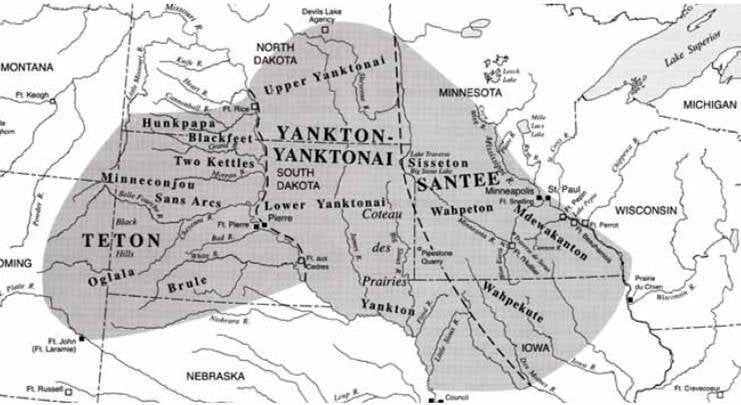
The history of the Sioux includes extensive conflicts with expansionist settlers, gold miners, and the U.S. Army, including well-known events such as the Battle of Little Bighorn and the Wounded Knee Massacre. Finally, the U.S. government reduced the once-thriving Sioux Nation to the Great Sioux Reservations in the late 1800s, where many still reside today.
Sioux culture: Lakota, Dakota, and Nakota
The appropriate name for the Sioux is the People of the Seven Council Fires (Oceti Sakowin Oyate). They speak one of the three dialects of the same language, Siouan. Within the Oceti Sakowin are seven bands: Wahpekute, Sistonwan, Ihanktown, Ihanktowana, Tetonwan, Wahpetonwan, and Mdewankanton. There are now various groups who descend from the original seven and maintain autonomy over the governing of their oyate (tribe).
The terms "Lakota," "Nakota," and "Dakota" are often used interchangeably with "Sioux," and they are the three largest subsets of the Great Sioux Nation.
These are also the three main languages spoken among the Sioux, which, when combined, make up the fifth most spoken indigenous language in the United States and Canada. The languages have much in common and many overlaps in dialect but have variances based on region.
The Dakota, also called the Santee, were historically woodland people who thrived on fishing, hunting, and some agriculture. They consist of five bands: Mdewankanton, Wahpetonwan, Wahpekute, Hunkpati, and Sisitonwan.
The Lakota, also known as the Teton, form the largest and most well-known band of the Sioux Nation (Oceti Sakowin). Renowned for being a strong and fierce tribe of warriors, they led much of the resistance against settlers encroaching on their land and were one of the last tribes to settle on a reservation. The Teton are divided into seven tribes: the Mniconjou, Itazipo/Sans Arc, Shiasapa, Oohenumpa, Oglala, Sicangu, and Hunkpapa.
Consisting primarily of the Yankton and Yanktonai tribes, the Nakota people split from the Dakota and settled in South Dakota's prairies; thus, the Nakota culture closely mirrors the Dakota. Today, they live in parts of North Dakota, South Dakota, Minnesota, and Canada.
The Dakota and Nakota Culture
During the early history of the Dakota, also referred to as the Santee, their land encompassed the southern two-thirds of modern-day Minnesota, along with territory in Wisconsin, northern Iowa, and eastern North and South Dakota.
Hunting, fishing, gathering, and horticulture were the focal aspects of the Dakota economy. While the Santee hunted buffalo, they depended more on deer, elk, and moose, given the animals' more significant population in the region. Apart from obtaining a food source from hunting, the Dakota people also grew wild rice and thípsiŋna (a starchy root), and harvested maple sugar.
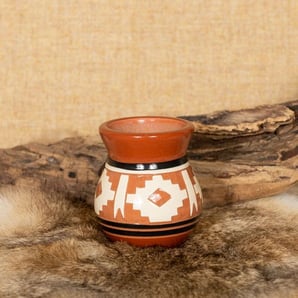
The Dakota possess a rich culture composed of crafts, weaponry, and music. They traditionally made pottery using pounded clay strengthened with crushed stones and utilized flint knives, scrapers, arrow points, and similar bone-made objects in their pottery-making process. Likewise, the Dakota created wooden bowls adorned with carved animal heads — specifically for the Medicine Dance and Medicine Feast use.
The Santee's talent for producing tools enabled the preparation of weapons for hunting and war. They made bows and arrows out of ash and animal sinew bowstrings. For close fighting, the Dakota people used ball-head and rifle-stock forms for warclubs.
In regards to music, the Santee utilized "single- and double-headed tambours or hand drums and tall wooden water drums.” The Dakota played these drums during meaningful ceremonies such as the Medicine Dance and the Sun Dance.
The Culture of the Lakota Tribe
By 1707, the Lakota people were already familiar with horses and guns. Around the middle of the 18th century, the Lakota were expert buffalo hunters and developed a buffalo-hunting process. They depended on a spiritual leader's vision to indicate the commencement of bison hunting. The vision informed the spiritual leader whether the group should wait or begin the hunting process. Buffalo (tatanka) provided the primary food source with any excess hides traded with other tribes and Anglo-Americans. The Lakota people also traded buffalo hides to Mandan villages for corn to obtain a better diet that did not wholly rely on meat consumption.
Given the Lakota people's nomadic lifestyle, they lived in large buffalo-hide tents called tipis designed for quick assembly and dismantling. In the Lakota culture, women oversaw the family home. They were responsible for constructing the tipi, which also required hauling the heavy posts via a traverse when the tribe decided to move.
The Lakota specialized in the preparation of many forms of crafts and artistry. The Lakota women practiced porcupine quillwork and beadwork. For porcupine quillwork, they softened and dyed "stiff porcupine quills and [wove] them onto leather or birchbark.” When most quillwork experts transitioned to beadwork practices rather than utilizing porcupine quills, quillwork became nearly a lost art. Much of the quill and beadwork adorns regalia for powwows and ceremonial items.
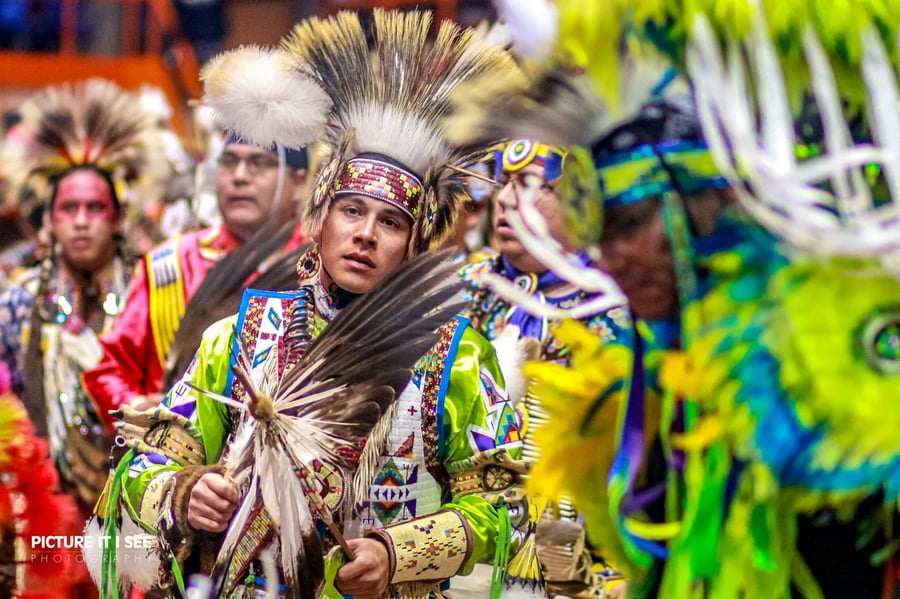
Beadwork presented a more reasonable practice considering seed beads, the main supply utilized in beadwork, were more accessible and did not require the tedious handwork of working with porcupine quills. Before the European introduction of glass beads, Native Americans carved beads from natural materials. Glass beads are now the primary material used by traditional beaders in numerous Native American tribes.
With hunting representing a significant aspect of the Lakota culture, buffalo hide painting served as an invaluable part of their culture. The people wore buffalo hides for practical and ceremonial circumstances. The hides offered the Lakota people protection from the harsh cold during the winter. The Lakota people believe the buffalo (tatanka) possess powerful medicine, so they also wore buffalo hides painted with symbols during times of illness. Buffalo hide painting served several purposes for various members of the tribe. Women painted hides with the intent of promoting motherhood, while political and spiritual leaders wore hides illustrating historical tribal events or a warrior's heroism.
Sioux Native American Animals
Like other Native American tribes, the Sioux (Oceti Sakowin) believe the animal nations are relatives. They feel a special bond exists among all living things: plants, fish, birds (the winged), animals (the four-legged), and people (the two-legged).
The Lakota, Dakota, and Nakota revere the horse nation. The Sioux view the horse (sun'ka wakan) as equal and sacred. The thunder beings (wakinyan) brought the horse to the Oceti Sakowin as a connection to the spirit world. With the horse's arrival, the people became more efficient at hunting and traveling — their world changed.
Buffalo (tatanka) provided life for the Sioux and other Native American tribes. This massive animal was esteemed. The Lakota utilized everything from the animal to provide food, shelter, clothing, and tools for the people. Beyond the physical, the buffalo gave a deep spiritual connection to the earth and sky, plus it carried heavy burdens for the people.
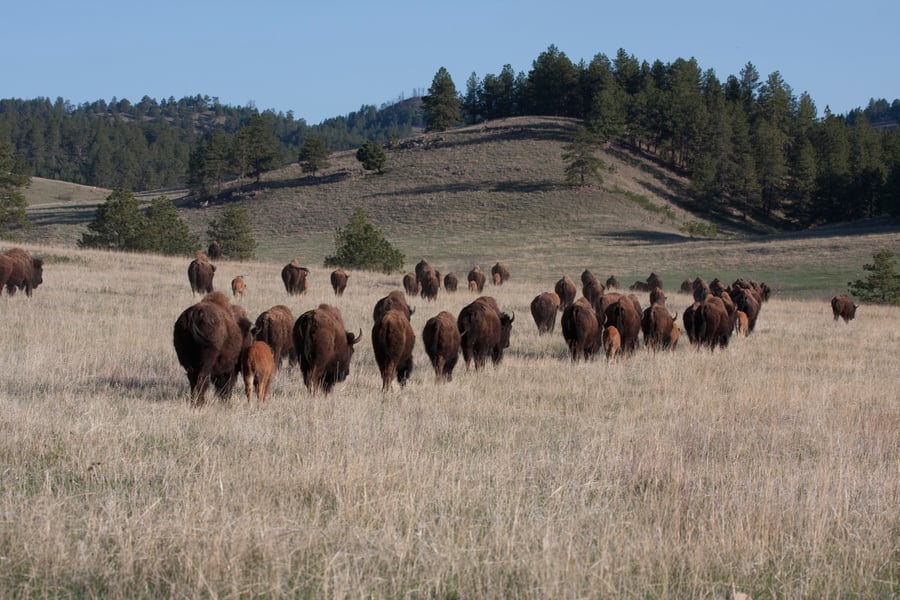
Likewise, the Sioux hold the elk (hehaka) in high esteem. The elk brings strength, endurance, and patience. Many tribal nations value the elk and place it as a teacher in many stories told through oral tradition. The elk is a survivor and a protector bringing good omens to people.
The turtle (keya) is another sacred creature among Native American tribes. Each tribe's cultural view of the turtle/tortoise is slightly different. For the Lakota and other tribes, the turtle represents grandmother earth (unci maka), who teaches all to walk in peace.
An eagle (wanbli) is considered the strongest and bravest of all birds. For this reason, its feathers symbolize what is highest, bravest, strongest, and holiest. The eagle has strong medicine – it represents courage and bravery. The eagle's feathers adorn the sacred pipe as a symbol of the Great Spirit (wakan tanka), who is above all and from whom all strength and power flow. It is a blessing to hold an eagle feather over a person's head, wishing bravery and happiness.
Animals, birds, and insects are used in many Lakota, Dakota, and Nakota stories and teach valuable lessons. Members of the Oceti Sakowin hold relationships with numerous animal nations: the wolf, the bear (mato), the deer, the owl, the coyote, and many others. Some tribal members belong to animal societies, which are specific to tribal communities.
Sioux Kinship, community, and belief system
In the early days of the Sioux, tribes or oyate — the people — lived in tiyospaye or camp circles with large extended families united by a sense of kinship and community. An appointed leader created a deep understanding of identity and belonging for the tiyospaye.
This sense of community is a deeply rooted part of their cultural identity and plays a significant role within the oyate. Personal relationships and social bonds are integral within the Oceti Sakowin and instrumental to conducting trade, family, combat, and religion.
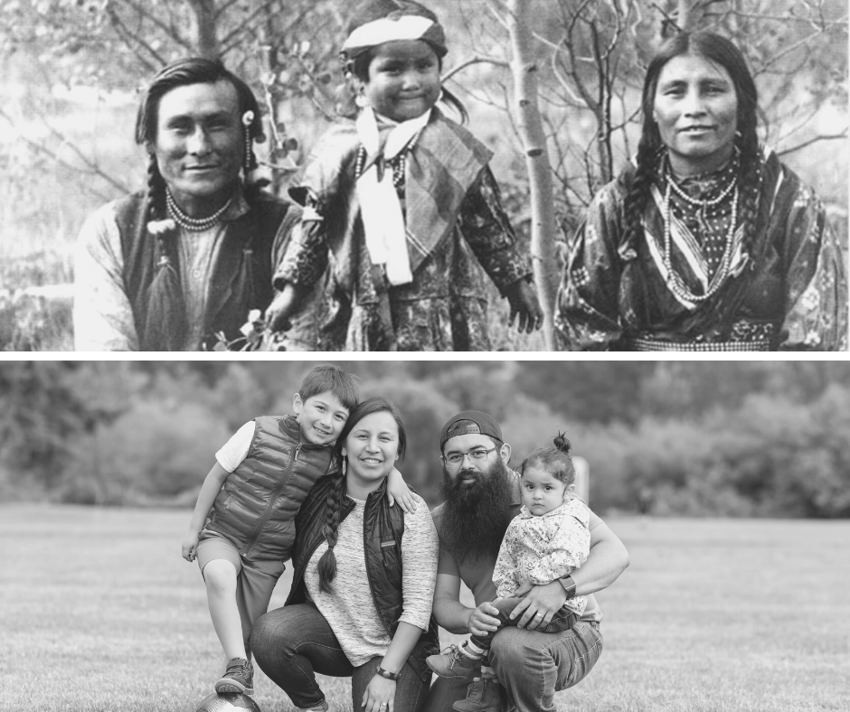
The Siouan belief system holds the premise that everything is connected: the earth and the stars, the sun and the moon, the plants and the animals, the plants and the people, the animals and the people, and people to people. They also believed wakan tanka, the Great Spirit, created the universe, the prayers and dreams were a way of connecting to the ancestral world. Their beautiful creation story encapsulates their belief system.
Throughout the 20th and 21st centuries, the Sioux tribes encountered various challenges that continue to threaten their territory and culture.
Where are Sioux Native Americans Today?
Today, the Great Sioux Nation lives on reservations across almost 3,000 square miles in South Dakota, North Dakota, Montana, Minnesota, and Nebraska. The Pine Ridge Indian Reservation in South Dakota is the second-largest in the United States, with a population of 40,000 members.
In 1995, the Lakota formed the Alliance of Tribal Tourism Advocates to "enhance and promote tourism as a means of economic development and growth, while preserving, protecting and maintaining respect for tribal traditions and lands."
Today, nearly 100,000 Lakota, Dakota, and Nakota live in the U.S. and 10,000 in Canada.
Environment Preservation/Keystone XL Pipeline
One of the main challenges the Oceti Sakowin faced over the past two decades pertains to the Keystone XL Pipeline. The Keystone XL Pipeline, proposed in 2008, involves two different components. With the first part already built and operating, the second of the two parts is the focal target of the pipeline's controversy. Its primary purpose involves expediting the transportation of Earth's dirtiest fossil fuels to market. T.C. Energy, the energy infrastructure company behind the pipeline, planned on constructing the pipeline from Hardisty, Alberta through Montana and South Dakota, ending in Steele City, Nebraska.
The pipeline faced different responses from the three administrations in office since its proposal. In 2015, the Obama administration vetoed the pipeline due to its extensive threats to the environment and direct impact on necessary resources accessible to the public, such as their water source. The Trump administration reversed the veto and signed an executive order to promote the Keystone XL construction. In November 2020, the Rosebud Sioux Tribe (Sicangu Oyate) and the Fort Belknap Indian Community filed a federal lawsuit against the United States Department of Interior and the Bureau of Land Management as a response to their granting the Keystone XL permit.
The debate regarding the pipeline concluded in 2021 with President Biden signing an executive order removing the KXL permit and T.C. Energy announcing its termination of the Keystone XL pipeline project. This pipeline project is only one of several.
The Black Hills land ownership dispute
The contention between the Oceti Sakowin and the U.S. government over the Black Hills territory remains a prevailing issue. The ownership dispute refers to the Fort Laramie Treaty of 1868, which intended to end incursions along the Bozeman Trail -- a shortcut through Sioux and Arapahoe hunting territory used by gold-seeking settlers to reach gold mines in Montana Territory. The treaty officially established the "Great Sioux Territory" and designated the Black Hills as territory exclusively for Native Americans. 
Following General George Custer's 1874 expedition through the Black Hills and his discovery of gold, an influx of gold miners permeated the Sioux-owned land, leading to violent clashes between the newcomers and the Lakota and Cheyenne warriors. In 1877, a year after Custer's defeat in the "Battle of the Little Bighorn," "Congress passed an act that redrew the lines of the Fort Laramie Treaty, seizing the Black Hills, forcing [the Sioux] onto permanent reservations," and permitting road construction through previously Sioux-owned land.
In 1980, the U.S. Supreme Court ruled the United States illegally acquired the Black Hills and presented a reparation offering of over $100 million, which is now worth over a billion dollars. Members of the Oceti Sakowin refused the payment, "[maintaining] that the land is theirs by sovereign right," and [they] continue to deny its sale negotiation.
How COVID-19 Affected Native Americans in South Dakota

With the entire country facing the force of the pandemic, Native Americans dealt with harsher circumstances and devastating losses. In South Dakota, although Native Americans compose 9 percent of the statewide population, they represent 13 percent of all COVID-19 cases and 15 percent of all deaths.
The tribes held different responses within the state of South Dakota to social distancing and health guideline restrictions. For example, the Cheyenne River Sioux Tribe (Minnecoujou) — as a means to minimize any potential outbreaks within their reservation — introduced checkpoints on roadways and mask mandates. With inadequate public health resources, the actions taken by the tribe served as a manner of protecting their people and preserving their culture.
Modern Sioux Native American: Starr Chief Eagle and the Art of Hoop Dancing
A member of the Sicangu Lakota tribe, Starr Chief Eagle has been practicing the art of hoop dancing since before she could walk. She grew up on the Pine Ridge Reservation in South Dakota and has practiced her skills for almost her entire life to perfect her techniques and carry on the tradition.
Starr places her passion for Lakota arts and culture into everything she does, including the pursuit of her Bachelor's degree in Lakota Studies. She's passionate about sharing her culture through hoop dancing, art, language, history, and song for future generations to keep the Lakota tradition alive.
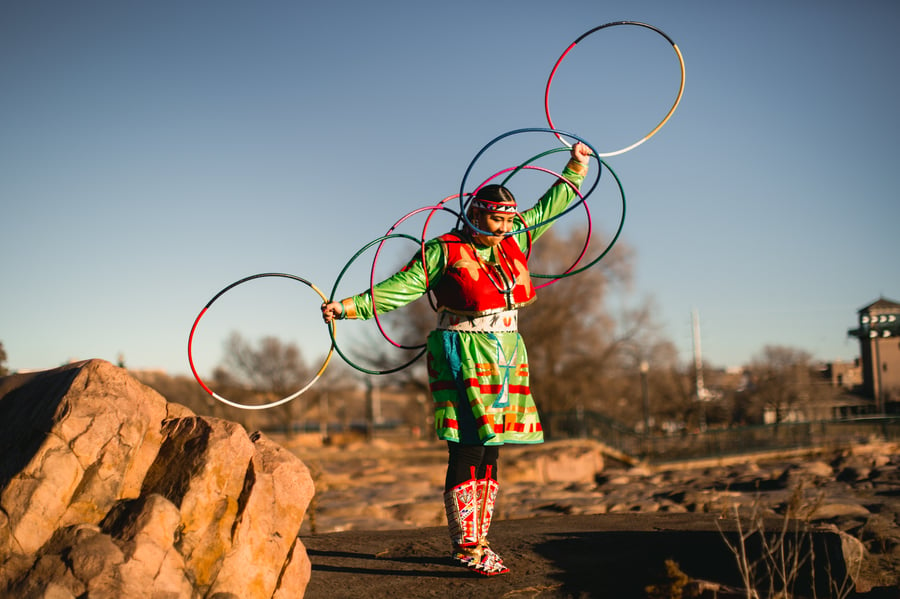
That deeply rooted passion also contributes to her crafts such as beading, sewing, and artwork she shares to teach others about her rich Lakota culture. People have seen Starr perform in notable places like Mt. Rushmore National Park, where she showcases her skills and brings the Lakota culture to the world.
Want to learn more about Native American history?
Grab our guide, Reflecting on Our Foundations, to learn about:
- Different tribes and where they lived
- Native American values and spirituality
- How learning and culture were passed down through generations
- How colonization impacted and disrupted Native American life
- And much more!


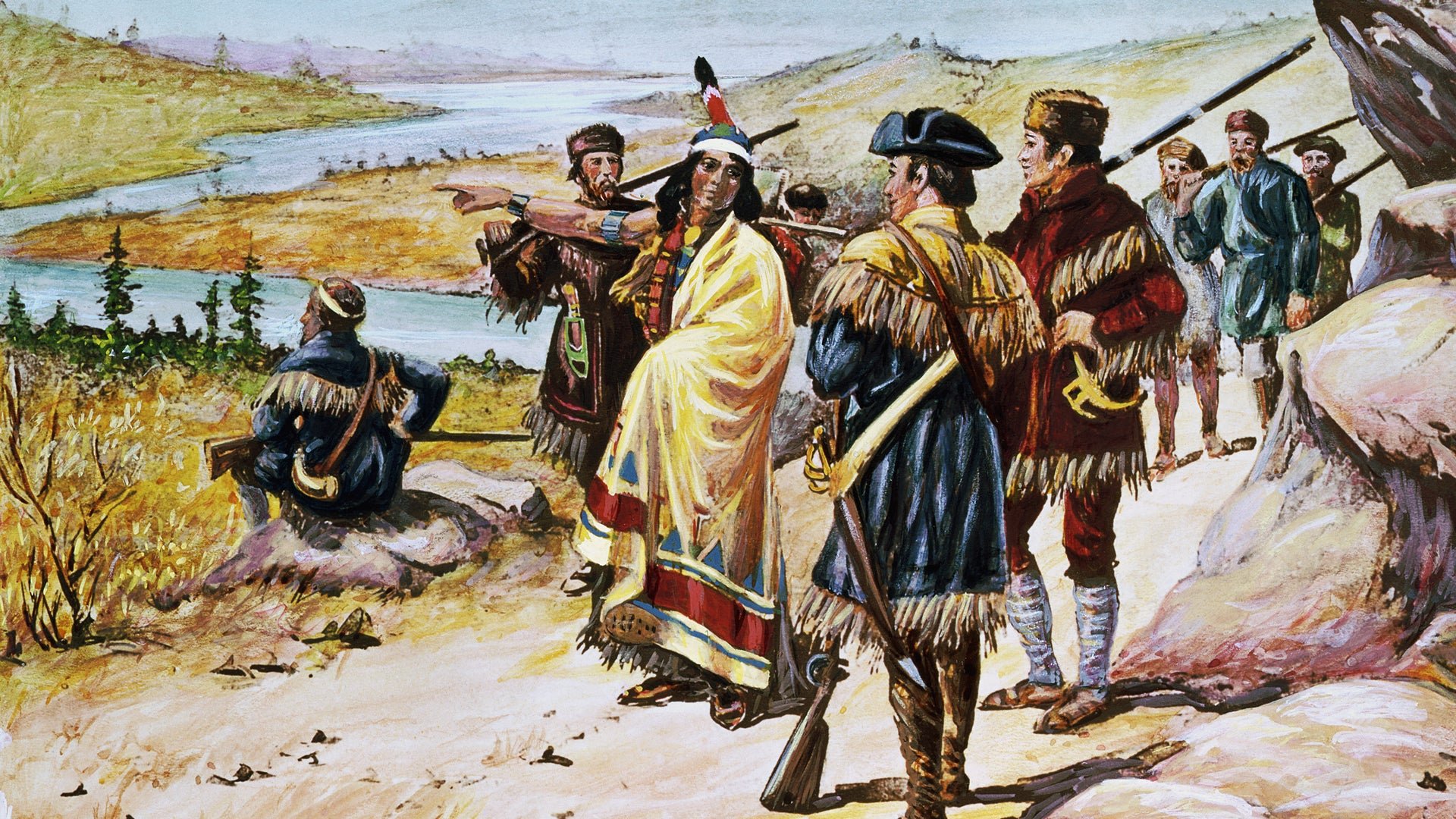
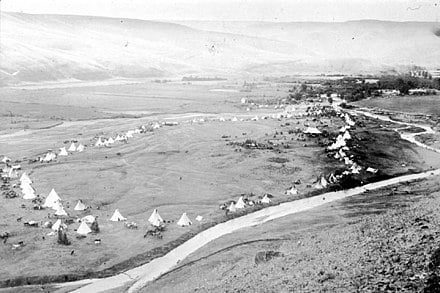

COMMENTS